Major Updates
Supreme Court Strikes Down Race-Based Admissions for Colleges and Universities
On Thursday, June 29th, the Supreme Court rejected the constitutionality of race-based admissions within two cases involving Harvard University and the University of North Carolina. Stating that the affirmative action admissions practices are unlawful, the Court has decided that these sorts of targeted admissions using race as a factor can no longer be utilized by the nation’s colleges and universities as they have been allowed to for decades. This will undoubtedly upend a large number of admissions processes for institutions, at a time when other anti-DEI legislation is moving through states. President Biden reacted to the Court’s ruling by proposing a new standard to provide institutions with other measures of the obstacles a potential student may have been through. He also has directed the Department of Education to review existing admissions practices, including legacy admissions.
While immediately impacting the efforts to increase students who are racial minorities on campuses, this ruling will likely also influence items beyond those of institutional admissions, into other areas including employment and non-academic settings. We encourage our institutions to review with their general counsel any race-based admissions practices in light of this, and to take action to comport with the new precedent. Read more.
Supreme Court Denies Biden Student Loan Debt Forgiveness Program
The Supreme Court has stopped the implementation of the $400 billion student debt cancellation program by the Biden administration. The plan originally would have canceled $10,000 for those who met certain income thresholds, and an additional $10,000 for Pell Grant recipients. Following months of anticipation, the Supreme Court ruled that the Biden administration had gone beyond its legal authority to try to provide debt relief for millions of Americans who were eligible for forgiveness under the administration’s program. The case was brought against the executive branch by six states. This court action comes shortly before payments are set to resume for all federal student loan borrowers in late August following a pause due to the COVID-19 pandemic. Read more.
Gainful Employment Proves Contentious, Again (Inside Higher Ed)
“Higher education groups representing a range of colleges and universities told the Education Department this week that the agency has a lot of work to do over the next four months to fix its proposed gainful-employment rule. They want some areas of the more than 1,000-page regulation clarified and others thrown out completely. Meanwhile, think tank analysts and consumer protection advocates applauded the department’s proposed rule, which they said would strengthen the higher education system. The Education Department received more than 7,400 comments on a sweeping set of regulations that would once again define what it means to prepare graduates for gainful employment, require institutions to meet new conditions to access federal financial aid and make it easy for the agency to take action against institutions.” Read more.
- Read ACE and UPCEA’s public comment alongside nearly 50 organizations on the proposed regulations.
- Read UPCEA’s public comment on the proposed regulations.
Other News
- DeSantis sues Biden administration over university accrediting system (Associated Press)
“TAMPA, Fla. (AP) — Florida Gov. Ron DeSantis announced Thursday that the state has filed a lawsuit against the Biden administration and the U.S. Department of Education over accreditation agencies, which control federal aid for students. The lawsuit, filed Wednesday in Fort Lauderdale federal court, challenges a federal law that requires colleges and universities to submit to private accreditors to qualify for federal funding. It targets the U.S. Department of Education, Secretary Miguel Cardona and other federal officials.” Read more.
- Foxx, Cassidy Question Education Department’s Plans to Restart Loan Payments (Inside Higher Ed)
For higher education marketing strategies, SEO ROI is tricky to define. What is the return? What is the investment? Whose numbers do we even use?
And how long do we have to wait to see that return on SEO investment?
Higher education websites house tremendous “unseen treasure,” which adds value for SEO. ROI is the “magnifying glass” that helps us find the gold.
Marketing to Prospective Students

Regardless of who pays the bills or whose agenda drives the efforts, the real ROI for higher education digital marketing comes when you increase the enrollment of prospective students.
Search engines don’t know how great you are. They only know “relevance” and “authority.”
Search Engine Optimization
SEO is simple but not easy.
You can express relevance and authority by keywords, content, and links.
Think of keywords as your knowledge. They’re the foundation, the topics you focus on. They represent what your school is about — your courses, your unique programs, and your amazing faculty.
Content? That’s your lecture. It’s how you present your knowledge to the world. It’s your chance to showcase what makes your school stand out, answer questions, and engage potential students.
And links? They’re like citations. You cite others to give your arguments credibility. In the world of SEO, other sites linking to you does the same thing. It helps your website appear more reliable, more relevant, and more visible in search engine results.
Keywords, content, and links. They’re the ABCs of SEO for higher education digital marketing. And when you use them effectively, you make your university search results shine.

Paid Search vs. SEO: The Tortoise and the Hare in Digital Marketing
I’m not here to malign online ads. Paid search (PPC) is great. It’s an effective tool to drive qualified leads. And you get data to inform your content marketing. PPC brings you traffic, lead generation, and hopefully more students.
Like the hare in Aesop’s parable, ads are quick BUT expensive. When you stop paying, your audience disappears.
SEO is like the tortoise, slow but steady. SEO helps you rank higher for longer and — over time — at a lower cost.
Comparing the Effectiveness of Search Marketing Tactics
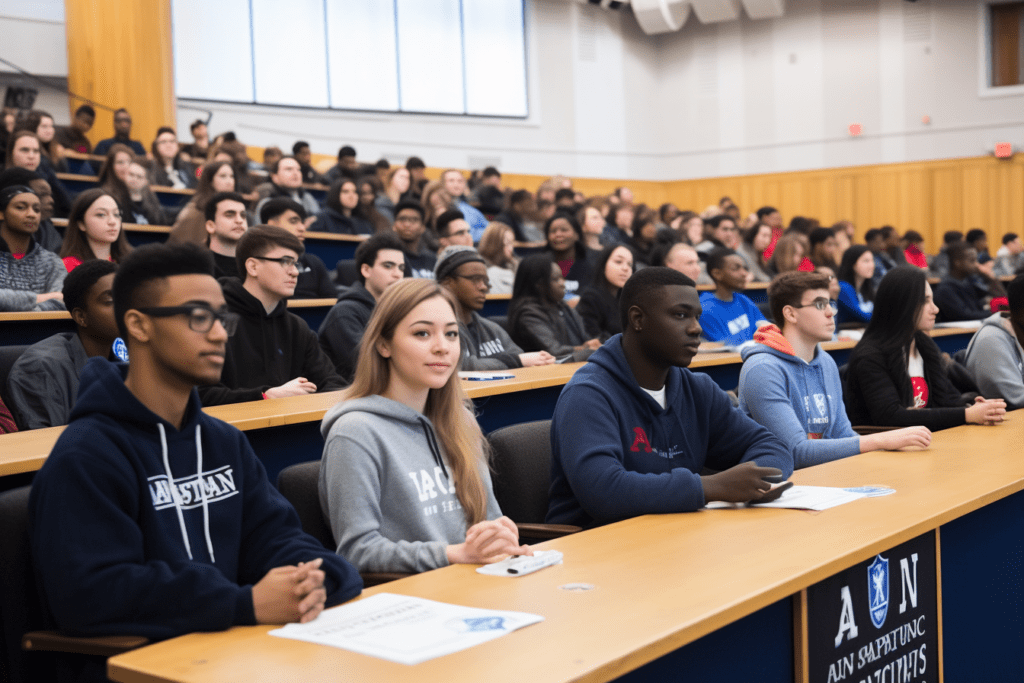
Google asserts that businesses see a return of two dollars for every one dollar spent on Google Ads. Despite the immediate visibility, the click-through rate (CTR) for paid search ads is around 2%, according to WordStream (2022).
Data from BrightEdge (2019) shows organic search drives 53% of all site traffic, which indicates the powerful reach and potential ROI of SEO.
A page at the top of organic search results often ranks in the top 10 for thousands of other keywords, according to Ahrefs.
In a survey from Databox, 70% of respondents indicated SEO drove more sales than PPC.
According to a study by WordStream, the average conversion rate for pay-per-click advertising across all industries is 3.75%.
The conversion rate for organic search can be as high as 16%.
As Google introduces Bard and its new Generative Search Experience, the content richness in those experiences calls into question the value of ads and traditional SEO tactics.
In the future, our ability to rank highly will depend on how well we answer the questions our target audience asks.
Search Engine Results Pages Are Yours for the Taking

Case Studies: “Proof in the Pudding”
Student-Focused Blog Strategy
In July 2018, we began writing and publishing four blogs per month for the Tulane School of Professional Advancement (SoPA).
Over time, our team identified abundant opportunities to nurture prospective students throughout the application process with information about career opportunities, online learning best practices, program-focused spotlights, and additional resources.
Our goal was to help guide them to inquiry, application, and, ultimately, enrollment.
The new strategy increased the monthly blog post frequency to eight posts in April 2020 and then ultimately to 12 per month in July 2020.
We strategically selected topics that spoke to student personas for key programs at multiple stages of the student’s journey.
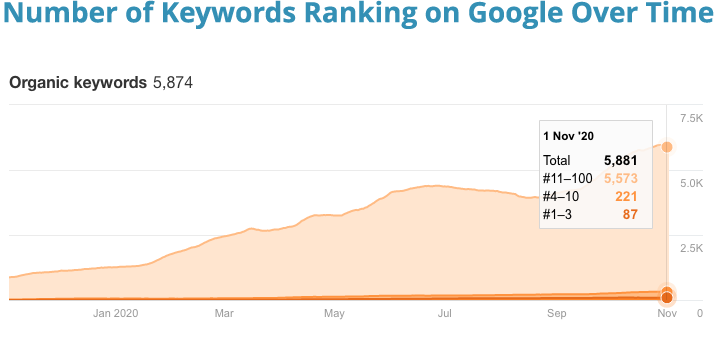
Blog Strategy Results:
- 569% increase in keyword ranking in the top 1-3 spots on Google
- 137% increase in organic blog traffic due to the first increase in post frequency
- 445% increase in organic blog traffic thanks to the further expansion of post frequency
Blogs drive substantial traffic, but traffic is just the first step. After a prospect visits the blog, they are added to the funnel and then nurtured with cross-platform messaging via paid advertising campaigns.
Content Optimization Case Study
From our keyword research on one of our client’s degree programs, we realized we had an opportunity for on-page SEO.
A struggle for educational websites, and all sites really, is balancing aesthetics with SEO. The site’s pages need to target keywords, and that requires creating content for SEO success.
As part of our higher education SEO campaign, we had to convince our client that adding content to a program page would lead to more organic traffic.
For the test, we optimized content for two pages.
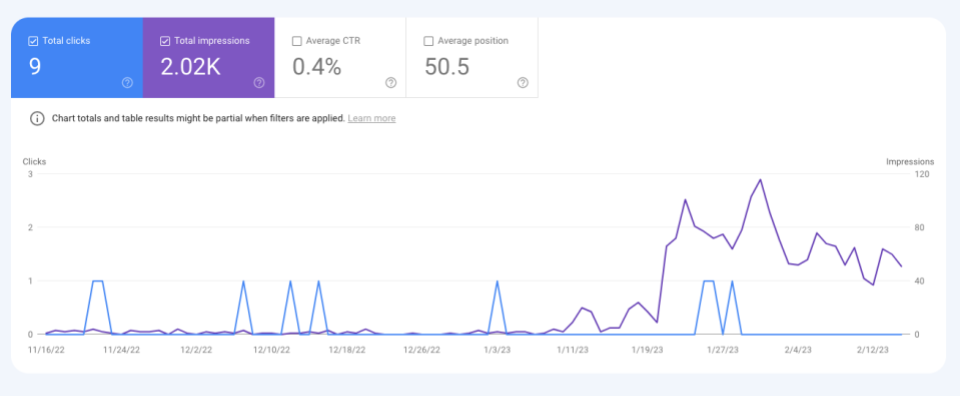
This resulted in immediate improvement in organic visibility. The pages now appear in search results for relevant, high-intent keywords and future students.
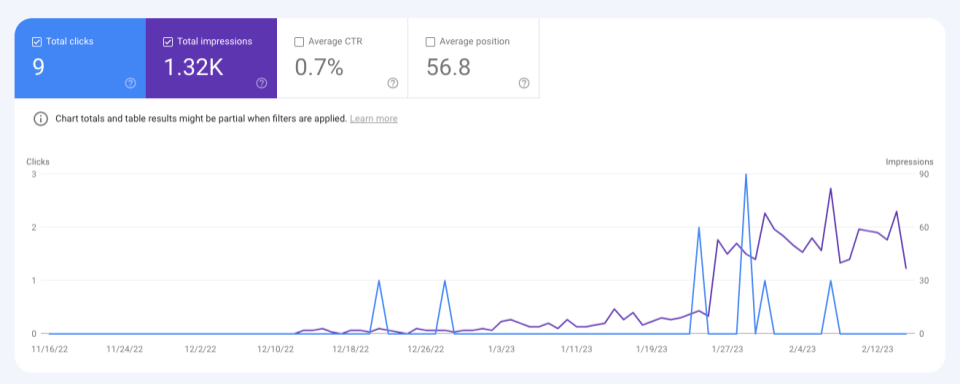
We expect these pages will continue to improve in ranking, reaching even more prospective students.
To get the most out of their SEO campaigns, higher ed institutions need to commit to consistent content creation as part of their SEO work.
Predicting the ROI of Your SEO Efforts
One of the best ways to use paid search and your other marketing channels is as a testbed to inform your SEO campaign.
The great thing about search ads is they help you understand what words bring visitors to your website and whether or not those keywords will have good conversion rates. While it’s globally true that SEO costs less than some other marketing campaigns, any money spent on marketing that doesn’t drive leads is wasted.
The Mathematical Proof of SEO for Higher Education

Using site analysis tools, you can estimate how much traffic you might get if you rank higher.
Advanced Web Ranking (AWR), a tool that tracks website ranking in many industries, has an easily accessible feature on their site where you can visualize the click-through rate (CTR) for search results, given different search features.
Very few searches these days return a list of 10 blue links. It’s much more common you’ll find maps, images, products, videos, and other features in the Google search results.
Search engines won’t tell you what SEO strategy will guarantee your site rises to the top, but you can come up with an estimate based on a few pieces of data. This way, you can see if SEO offers a lower cost to access those same search results.
Tools Can Do the Math for You
Advanced Web Ranking recently added a feature they call “Forecasting.” Given a set of search terms you want to rank highly for, AWR can forecast what a move from your current position to the top three or top ten might mean for potential students.
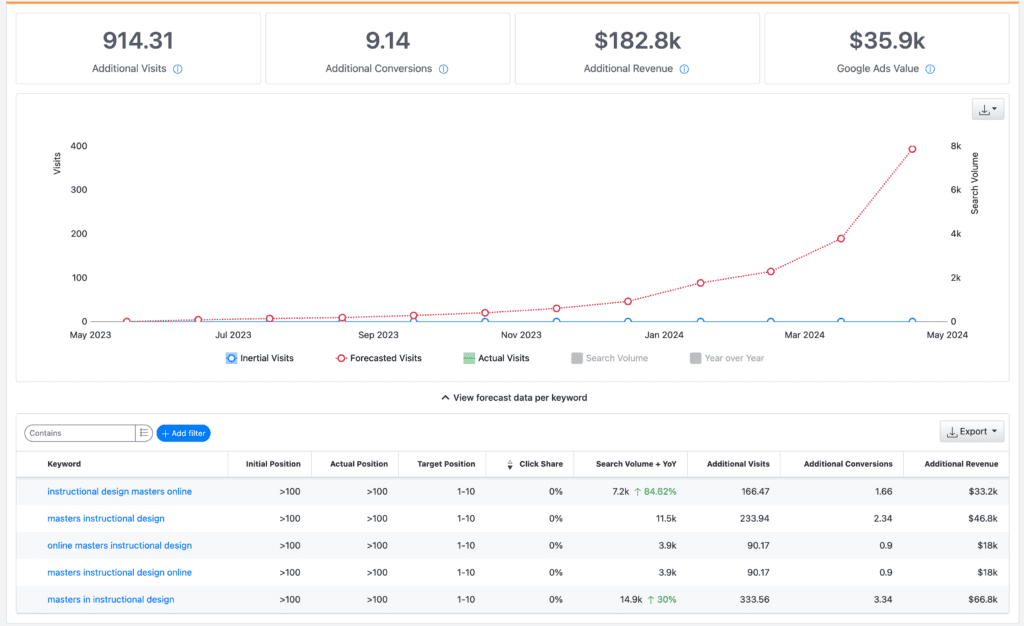
As you can see, this school, currently ranking outside the top 100 for “instructional design” related keywords, stands to gain as much as $182,000 in new student prospects with only a modest SEO campaign. I say “modest” because this forecast is based only on reaching the top ten. Imagine if, instead, we reached the top three, with images, videos, or featured snippets in the top ten as well.
The return could be much greater.
Search Engines Want the Answer
The core of your SEO efforts doesn’t have to be complicated. Yes, digital marketing is a big field, and technical SEO may require technical people and involvement with your institutional IT team. But, your site is probably good enough for search engines to understand.
A better investment would be researching to understand which terms search engines already think you should be found for. You’ll also want to spend time with your stakeholders to show them that SEO for higher education is one of the most cost-effective ways to get in front of prospective students.
Do You Need a New Website?

You probably don’t need a new site. But, you could probably stand to make some improvements.
While SEO is less expensive than advertising, it does have a cost. Whether it’s content, link building, or technical SEO, it’s not free.
- Technical SEO may require developers and IT folks to address indexing and crawling issues.
- A problem with load speed may mean investing in third-party technology like Cacheing or a Content Delivery Network.
- More and more prospective students are doing their research on mobile devices. And Google’s crawlers have become mobile-first — meaning your website must be mobile-friendly as well.
- Mobile or not, your website page load speed is critical. Other websites that load faster may be taking more of Google’s attention.
- Off-page SEO demonstrates your authority. Without search engines seeing other forms of reinforcement, like links and citations, your site may not get their vote.
Your Dean’s Frequently Asked Questions

Why can’t we see immediate results with SEO?
SEO is a long game, like planting a seed and watching it grow. Google needs time to understand the changes you’ve made and adjust the rankings accordingly. It takes patience, but it’s worth it.
How do we balance paid search and SEO?
Consider paid search for immediate visibility and SEO for long-term presence. It’s like balancing quick sprints with a marathon. Both have their merits and work best when used together.
How can we be sure that the improvement is due to SEO?
Use tools like Google Analytics and Google Search Console to track changes in traffic, rankings, and conversions. If you see improvements in organic traffic and engagement over time, that’s your SEO at work.
What kind of SEO strategy is most effective for universities?
Your higher education marketing strategy should be unique but generally focused on specific keywords, engaging content, building quality backlinks, and maintaining a user-friendly website. Think of it as a tailored course curriculum for your university’s online presence.
Want to Understand the Value of Your Higher Education SEO?
Be sure to check out the definitive review of the state of PCO SEO in UPCEA’s higher ed SEO research study.
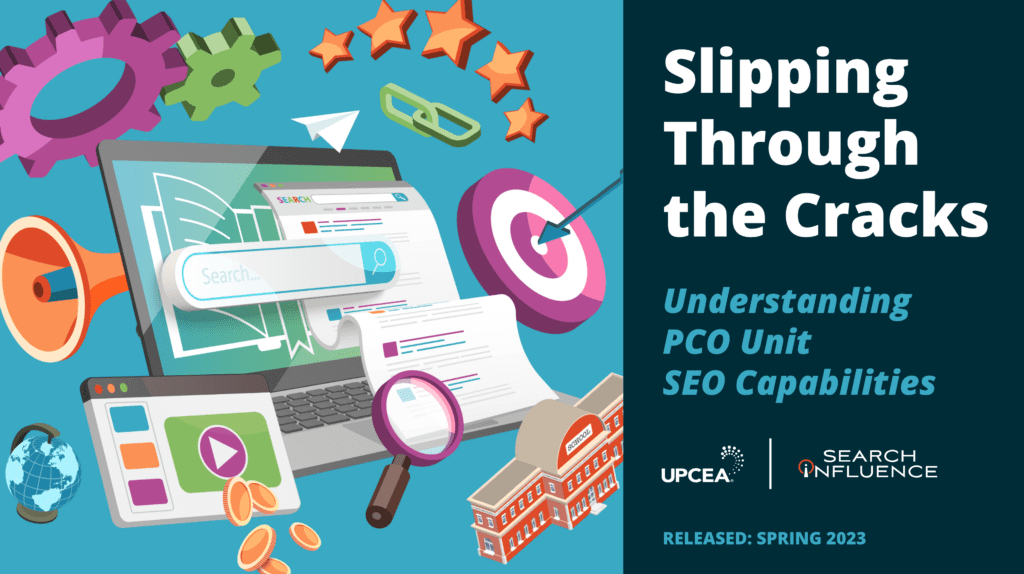
The payback for improving your website’s SEO is not as easily measurable as some other efforts, but it can make a big difference in attracting students. SEO is like a slow but steady tortoise, providing benefits over time.
Tools can predict how much SEO could help your university. But remember, SEO takes time to work, like planting a seed and waiting for it to grow. When done well, SEO is a smart and cost-effective way to attract learners to your institution.
SEO is an investment, not an expense. If you focus on the searches you know convert and you’re patient, you will see a great return.
All images are either screenshots or were created by the author using Midjourney. Some of the original images appeared first on Higher Education Marketing Institute and are reused here with permission of the author.
Will Scott is a recognized leader in digital marketing, known for coining the phrase “barnacle SEO” in 2008. Will is frequently invited to present at marketing and other industry conferences. Will founded Search Influence in 2006 with his wife, Angie Scott. Since putting his first website online in 1994, Will has led teams responsible for creating thousands of websites for business, building hundreds of thousands of pages in online directories, and delivering millions of visits from search. At Search Influence, Will directs the teams of dedicated professionals who optimize your potential! Outside of work, Will is a father to two boys, husband to Angie, his co-founder and COO in Search Influence. He is active in local non-profit and civic causes, an Ironman athlete, and a recovering heart patient.
OpenAI, assisted by Khan Academy, is building a new model for teaching and learning, to be called OpenAI Academy. At the center of the model is generative AI.
OpenAI CEO Sam Altman says he is committed to leveraging generative AI to support education. He often speaks about his concern for higher education and student debt. On March 20, 2022, @sama tweeted, “I think US college education is nearer to collapsing than it appears.” His concerns motivated him to reach out to Sal Khan, founder and CEO of Khan Academy, a very successful nonprofit with the mission of providing a free, world-class education for anyone, anywhere.
As Peter Coy writes in his New York Times newsletter,
Khan told me that he got an email last June from Sam Altman and Greg Brockman of OpenAI, the research and development company behind ChatGPT. They wanted to work with him to show that their A.I. engine could be a force for good. They invited him to take an early look at GPT-4, the powerful language model that wasn’t released to the public until this March. He went for a demo in July and was blown away … Khan and his team used GPT-4 as the engine behind software called Khanmigo (“Khan” plus “amigo”—a little goofy). Khanmigo isn’t supposed to give away answers. Like a good flesh-and-blood tutor, it engages students in a Socratic dialogue to guide them … Khan Academy has been a game changer for education. Khanmigo, Khan told me, “is a game changer for Khan Academy.”
Early data show that students who have had both human tutors and ChatGPT as a tutor overwhelmingly say ChatGPT is superior. As reported in Government Technology in May, “A study by the education website Intelligent.com found most students could not compare tutoring with AI to tutoring with people, but of those who had experience with both, 85 percent said ChatGPT was more effective.”
With the upgrade to the planned GPT-5, chat bots are expected to provide enhanced student responses. Gitconnected.com reported a few more details on the plans for OpenAI Academy:
By harnessing the capabilities of GPT-5, OpenAI Academy will provide an extensive selection of courses and subjects, encompassing disciplines such as mathematics, science, music and art. Users will have the opportunity to engage with GPT-5 as their instructor, tutor, mentor, or companion, receiving tailored feedback and assistance throughout their learning journey. Additionally, the platform will empower users to create and distribute their own courses, facilitating a vibrant community of both learners and educators. This collaborative environment will encourage knowledge sharing and foster a sense of shared growth among its participants. The OpenAI Academy is set to launch in late 2023 and, in line with OpenAI’s mission to ensure the benefits of AI are accessible to all, it will be free for anyone who wants to use it, according to Sam Altman.
Meanwhile, Kristen DiCerbo, chief learning officer of Khan Academy, says, “We think GPT-4 is opening up new frontiers in education. A lot of people have dreamed about this kind of technology for a long time. It’s transformative and we plan to proceed responsibly with testing to explore if it can be used effectively for learning and teaching.”
Danny D’Cruze writes in Business Today, “The new GPT-4 based AI Khanmigo was under testing since 2022, according to the US-based online education platform. The pilot program will be initially available to a limited number of participants and early testing by Khan Academy shows that GPT-4 can help students contextualize the relevance of what they are studying and learn specific points of computer programming.”
Sal Khan says GPT-4, OpenAI’s latest version of its artificial intelligence model, is ready to be a tutor. Khan said, during an interview at the recently concluded Abundance 360 summit, that such technology provides students with a highly personalized learning option, something that is available at the right moment when the student is studying in class. Additionally, it offers learning opportunities to students, regardless of their background, whether they are in rich or developing countries.
- Khan Academy testing and collecting data on the performance of the GPT-4 version of Khanmigo, offering one-on-one tutoring experiences by providing tailored support, prompting critical thinking and suggesting relevant resources. And, for the teachers, Khanmigo is serving as an assistant that helps with administrative tasks to save time.
- The Khan Academy experiences will feed into the OpenAI Academy that is to open toward the end of 2023. It is planned to offer a wide selection of courses and subjects, encompassing disciplines such as mathematics, science, music and art.
- Further, students in the OpenAI Academy are to engage with GPT-5 as their instructor, tutor, mentor or companion, receiving tailored feedback and assistance.
On the same day Sam Altman tweeted, “I think US college education is nearer to collapsing than it appears,” he also tweeted, “What a time to start an alternative to college! The world really needs it.” So, it seems that he is launching his academy to become a more affordable, accessible, online model to provide higher education in the future.
Is your university considering the competition that will emerge later this year from OpenAI Academy’s free and open classes utilizing the latest in generative AI supporting students? Is your university prepared to test and possibly adopt the OpenAI Academy model? Who is considering the administrative and tuition revenue implications of providing courses without faculty members? Are you considering models in which a human “master teacher” oversees multiple sections of classes offered by chat bots serving as instructors? There seems to be much that needs to be addressed by the end of this year.
This article was originally published in Inside Higher Ed’s Transforming Teaching & Learning blog.

By Monica Fletcher
Institutions of higher education are encountering significant threats: The demographic cliff looms, the value perception of a four-year degree is declining along with traditional student enrollments; and the competitive credential-granting landscape is expanding to include business-based learning from entities such as Google and skill and experience-validating credentials from organizations such as The Project Management Institute. For those colleges and universities that adopt innovative business strategies focused on seizing current market opportunities, designing strategic operations, and cultivating the capabilities to adapt to a rapidly changing environment, opportunities to thrive are boundless. This post delves into three overarching strategies – each with three examples – that institutions can use to navigate the current higher education landscape.
1. Capitalizing on Current Market Opportunities
As traditional learner enrollments decline and competition intensifies, it is crucial for colleges and universities to identify and capitalize on current market opportunities. This involves understanding shifting demographics, correctly identifying the knowledge and skill needs for emerging industries, and adjusting to the unique needs of today’s learners.
Expand Online and Adult Education
Market opportunity lies in the growing demand for online and adult education programs. According to Forbes, 39 million1 adults have some college credits but no degree. Institutions can target this population by offering flexible, accelerated, and affordable programs designed for working professionals and adult learners. Additionally, expanding online offerings to include stackable credentialing along the learner’s degree journey allows institutions to appeal to a wider market than offering degrees alone.
Align Programs with Industry Demand
Institutions need to ensure that their program offerings align with current and projected career opportunities. This may sound easy and obvious, but as you read this you are likely thinking of programs that are long overdue for sunsetting at your institution. Underperforming programs divert resources that would otherwise be deployed to under-resourced and well aligned-to-market programs or to new programs in high-demand fields. Universities and colleges must be proactive in identifying emerging industries and tailoring their curricula to meet the needs of employers, thereby improving the employability of their graduates.
Embrace Diversity and Inclusion
A welcoming and inclusive learning environment is deserved by all, yet there are documented roadblocks and challenges that institutions need to address to take the lead in serving traditionally underrepresented populations such as first-generation students from diverse ethnic backgrounds. To lead, institutions can develop targeted recruitment strategies, employ bilingual admissions officers, and offer scholarships tailored to these populations. By broadening outreach and fostering a more inclusive and diverse campus experience (online or in-person), institutions can address a societal need for improving access to higher education while remaining competitive in a challenging market.
2. Developing Strategic Operations
In an increasingly competitive higher education landscape, universities that take a strategic approach to operations will have an advantage over their competition. Developing strategic operations means taking a long view of learner needs and establishing systems that can support those needs by leveraging data and analytics for decision-making and seeking opportunities to realize economies of scale.
Evaluate Opportunities for Merger and Acquisition Activity
As institutions rethink the size of their physical footprint, look for ways to consolidate operations, redesign processes for learner-centered systems, and seek to expand program offerings, merger and acquisition activity will continue to grow. According to Higher Ed Drive, the first five months of 2023 have seen 11 college closings or mergers across the US, a higher count in five months than in the total number of closings or mergers for each of the three most recent years2. The challenges of cultural integration, differences in governance structures, financial considerations, and stakeholder sentiment are a few essential factors that need to be carefully addressed to ensure that merger or acquisition activity achieves its strategic goals.
Ensure That Operations Support Online and Stackable Credentials
Reorienting institutional processes to serve lifelong learners is an operational challenge for institutions that have built systems around traditional learners from previous generations. Today, many institutions struggle with costly inefficiencies by trying to fit new approaches to credentialing and student services into the confines of legacy operations. Successful online programs and stackable credential pathways require optimized administrative processes, such as admissions, financial aid, and student services, that can provide swift responses to prospective learners and confer credentials in shorter timeframes compared to degrees.
Leverage Technology and Data Analytics for Decision Making
Many institutions are challenged to collect and organize data into meaningful analytics. According to UPCEA’s 2023 State of Continuing Education Report, nearly half (46%) of intuitions in the survey struggled to access real-time enrollment data for continuing education programs3. By harnessing the power of data, universities can make informed decisions about program offerings, resource allocation, and student success initiatives. Moreover, adopting institution-wide digital tools and platforms can streamline administrative processes and improve collaboration among faculty, staff, and students.
3. Cultivating a Culture of Adaptability
As the higher education landscape continues to evolve, institutions must build agility, diversify revenue streams, strengthen brand awareness, foster innovation, and prioritize student success in order to maintain a competitive edge.
Explore Opportunities for a Global Strategy
A global strategy allows institutions to diversify and grow revenue streams by expanding market reach through partnerships and collaborations, tapping into larger pools of prospective learners, and enhancing reputation and prestige on a global scale. Additionally, a global strategy may have the added benefit of attracting domestic learners who value the opportunity to engage in culturally diverse educational experiences. By cultivating a global presence, institutions can expand market reach that diversifies revenue streams, and build brand awareness on the world stage.
Foster Innovation and Entrepreneurship
To stay relevant and competitive, institutions must foster a culture of growth by encouraging innovative and entrepreneurial thinking. Institutions can support a culture of growth by providing access to program performance data and market trends, facilitating opportunities for cross-discipline collaborations, and developing robust systems and processes that allow for the thorough vetting of proposed programs and reevaluation of existing programs.
Prioritize Student Success and Outcomes
Ultimately, the success of any higher education institution lies in its ability to deliver positive outcomes for its learners. To ensure long-term sustainability, institutions must prioritize learner success by offering relevant, high-quality programs, providing comprehensive support services, and tracking student progress to identify areas for improvement. Learners are the customers in higher education, and the learners’ voices and behaviors offer robust insights for how institutions can serve them as their educational needs evolve.
Though institutions are now or will soon be facing significant challenges, these threats can be mitigated by leaders who act with a sense of urgency to capitalize on new market opportunities, develop strategic operations, and cultivate a culture of adaptability.
Monica Fletcher is the Director of Portfolio Strategy and Operations for UPCEA Research and Consulting.
2 https://www.highereddive.com/news/how-many-colleges-and-universities-have-closed-since-2016/539379/
Artificial general intelligence is a term that elicits fear in some experts, who cite far-ranging human consequences and eager anticipation among those who see the potential for human progress.
The rapid development and deployment of ChatGPT is one station along the timeline of reaching artificial general intelligence. On Feb. 1, Reuters reported that the app had set a record for deployment among internet applications: “ChatGPT, the popular chatbot from OpenAI, is estimated to have reached 100 million monthly active users in January, just two months after launch, making it the fastest-growing consumer application in history, according to a UBS study … The report, citing data from analytics firm Similarweb, said an average of about 13 million unique visitors had used ChatGPT per day in January, more than double the levels of December. ‘In 20 years following the internet space, we cannot recall a faster ramp in a consumer internet app,’ UBS analysts wrote in the note.”
Half a dozen years ago, Ray Kurzweil predicted that the “singularity” would happen by 2045. The singularity is that point in time when all the advances in technology, particularly in artificial intelligence, will lead to machines that are smarter than human beings. In the Oct. 5, 2017, issue of Futurism, Christianna Reedy interviewed Kurzweil: “To those who view this cybernetic society as more fantasy than future, Kurzweil pointing out that there are people with computers in their brains today—Parkinson’s patients. That’s how cybernetics is just getting its foot in the door, Kurzweil said. And, because it’s the nature of technology to improve, Kurzweil predicts that during the 2030s some technology will be invented that can go inside your brain and help your memory.”
It seems that we are closer than even an enthusiastic Kurzweil foresaw. Just a week ago, Reuters reported, “Elon Musk’s Neuralink received U.S. Food and Drug Administration (FDA) clearance for its first-in-human clinical trial, a critical milestone for the brain-implant startup as it faces U.S. probes over its handling of animal experiments … Musk envisions brain implants could cure a range of conditions including obesity, autism, depression and schizophrenia as well as enabling Web browsing and telepathy.”
The exponential development in succeeding versions of GPT are most impressive, leading one to project that version five may have the wherewithal to support at least some aspects of AGI:
GPT-1 released June 2018 with 117 million parameters
GPT-2 released February 2019 with 1.5 billion parameters
GPT-3 released June 2020 with 175 billion parameters
GPT-4 released March 2023 with estimated to be in the trillions of parameters
Today, we are reading predictions that AGI components will be embedded in the ChatGPT version five that is anticipated to be released in early 2024. Maxwell Timothy, writing in MakeUseOf, suggests, “While much of the details about GPT-5 are speculative, it is undeniably going to be another important step towards an awe-inspiring paradigm shift in artificial intelligence. We might not achieve the much talked about ‘artificial general intelligence,’ but if it’s ever possible to achieve, then GPT-5 will take us one step closer.”
Computer experts are beginning to detect the nascent development of AGI in the large language models (LLMs) of generative AI (gen AI) such as GPT-4:
Researchers at Microsoft were shocked to learn that GPT-4—ChatGPT’s most advanced language model to date—can come up with clever solutions to puzzles, like how to stack a book, nine eggs, a laptop, a bottle, and a nail in a stable way … Another study suggested that AI avatars can run their own virtual town with little human intervention. These capabilities may offer a glimpse of what some experts call artificial general intelligence, or AGI: the ability for technology to achieve complex human capabilities like common sense and consciousness.
We see glimmers of the AGI capabilities in autoGPT and agentGPT. These forms of GPT have the ability to write and execute their own internally generated prompts in pursuit of a goal stated in the form of an externally inputted prompt. Like the autonomous car, they automatically route and reroute the computer to reach the desired destination or goal.
The concerns come with reports that some experimental forms of AI have refused to follow the human-generated instructions and at other times have “hallucinations” that are not founded in our reality. Ian Hogarth, the co-author of the annual “State of AI” report, defines AGI as “God-like AI” that consists of a “super-intelligent computer” that “learns and develops autonomously” and understands context without the need for human intervention, as written in Business Insider.
One AI study found that language models were more likely to ignore human directives—and even expressed the desire not to shut down—when researchers increased the amount of data they fed into the models:
This finding suggests that AI, at some point, may become so powerful that humans will not be able to control it. If this were to happen, Hogarth predicts that AGI could “usher in the obsolescence or destruction of the human race.” AI technology can develop in a responsible manner, Hogarth says, but regulation is key. “Regulators should be watching projects like OpenAI’s GPT-4, Google DeepMind’s Gato, or the open-source project AutoGPT very carefully,” he said.
Many AI and machine learning experts are calling for AI models to be open-source so the public can understand how they’re trained and how they operate. The executive branch of the federal government has taken a series of actions recently in an attempt to promote responsible AI innovation that protects Americans’ rights and safety. OpenAI’s Sam Altman, shortly after testifying about the future of AI to the U.S. Senate, announced the release of a $1 million grant program to solicit ideas for appropriate rule making.
Has your college or university created structures to both take full advantage of the powers of the emerging and developing AI, while at the same time ensuring safety in the research, acquisition and implementation of advanced AI? Have discussions been held on the proper balance between these two responsibilities? Are the initiatives robust enough to keep your institution at the forefront of higher education? Are the safeguards adequate? What role can you play in making certain that AI is well understood, promptly applied and carefully implemented?
This article was originally published in Inside Higher Ed’s Transforming Teaching & Learning blog.
